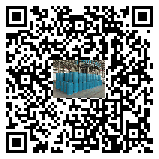Digital Inkjet Dispersants: The Molecular Key to Unlocking a World of Color
As digital inkjet technology reshapes the visual experience, from personalized patterns on phone cases
to large-scale advertisements on architectural facades, from the gradient colors of sportswear to the
intricate structures of 3D-printed models, dispersants, the "invisible guardians" of ink, control color rendering
and material stability with molecular-level precision. These seemingly ordinary chemical additives are actually
the "molecular bridge" connecting pigments and printing media, and are the key to ensuring print quality
and stability.
I. Molecular-Level Control: Precise Guidance for Pigment Particles
The core function of dispersants is to address the "agglomeration crisis" of pigment particles. If pigment particles
in ink are not effectively dispersed, they will spontaneously aggregate due to surface energy differences, forming
sediments or clogging printheads. Dispersants achieve precise control through two mechanisms:
Charge repulsion: Ionic dispersants (such as polycarboxylates) form a negatively charged layer on the pigment
surface, preventing particles from approaching each other by the principle of like charges repelling each other.
For example, in UV-curable inks, dispersants can elevate the zeta potential of carbon black particles to above
-40mV, ensuring system stability.
Steric Hindrance:
Polymeric dispersants (such as styrene-acrylic acid copolymers) form a physical barrier on the particle surface
through their long chain structure. Experimental data shows that inks using steric hindrance dispersants can
achieve a standard deviation in the pigment particle size distribution of less than 0.1 micron, far superior to
conventional processes.
This dual mechanism makes dispersants a "molecular navigator" for pigment particles. In digital printing on
polyester fabrics, dispersants can refine dye particles to 0.2-0.5 microns, ensuring unobstructed printhead flow,
while also stabilizing ink viscosity at 1.5-3 mPa·s, preventing ink jetting and line breakage.
II. Color Revolution: From "Deviation Control" to "Extreme Color Reproduction"
Dispersants' control over color is reflected in three dimensions:
Color Uniformity: By stabilizing the dispersion system, color variations caused by particle settling are eliminated.
In the advertising printing industry, inks using optimized dispersants can achieve color deviations of less than
1.5 ΔE across printed designs within the same batch, meeting high-end display requirements.
Color Gamut Expansion: Ultrafine particle dispersion technology enables inks to produce richer color gradations.
For example, in textile printing, dispersants help achieve gradient transitions at 1200 dpi resolution and a color
gamut coverage of 98% of the sRGB standard.
Improved Weatherability: Dispersants significantly enhance color fastness by strengthening the binding force
between pigments and the medium. High-temperature dispersed direct-injection digital printing inks maintain
color fastness levels 4-5 after evaporation at 180°C, and their sunlight resistance is extended to over three years.
III. Material Adaptability: A "Universal Language" Across Media
The breakthrough of dispersants lies in their material adaptability:
Special Media Printing:
On hydrophobic surfaces such as glass and metal, dispersants adjust the surface tension to 20-50 mN/m, reducing
the ink contact angle from 120° to below 30°, achieving "ink on paper" adhesion. An adaptive dispersant developed
by a laboratory has successfully printed microcircuits with a resolution of 2400 dpi on PET film.
3D Printing Support: Dispersants form a three-dimensional network structure within photocurable resins, extending
the suspension time of ceramic powders to over 72 hours, enabling the printing of complex structures. Furthermore,
their light transmittance of >90% ensures UV light penetration to a depth of 0.5mm, enabling precise layer-by-layer
curing.
Environmental Transformation:
Water-based dispersants have achieved zero VOC emissions, and the development of bio-based dispersants has
increased the proportion of renewable raw materials to over 60%. For example, dispersants synthesized from
plant-derived monomers have increased the biodegradability of inks to over 85% while maintaining performance.
IV. Technological Evolution: From "Stable Dispersion" to "Intelligent Response"
Current dispersant research demonstrates three major trends:
Nanoscale Control: Controlled free radical polymerization is used to prepare dispersants with extremely narrow molecular
weight distributions, achieving a standard deviation of pigment particle size less than 0.1 micron. A research team has
developed an intelligent dispersant that reduces ink milling time from 8 hours to 2 hours while increasing color density
by 15%.
Environmental Adaptability: pH/temperature-responsive dispersants can automatically adjust interparticle forces during
the printing process. For example, in 3D printing, dispersants provide steric hindrance at 25°C and prevent particle settling
at 60°C through charge repulsion, ensuring printing accuracy.
Green Chemistry: Water-based dispersants have achieved zero VOC emissions, and the development of bio-based
dispersants has increased the
proportion of renewable raw materials to over 60%. A new dispersant uses a corn starch derivative as a backbone,
increasing the ink biodegradability to over 85% while maintaining performance.
V. Future Vision: The "Color Foundation" of Digital Manufacturing
As digital inkjet technology expands into higher precision and a wider range of materials, dispersant research is
entering a new era:
Quantum Dot Dispersion: Achieving stable dispersion of nanoscale quantum dots is key to developing high-color
gamut display technology.
Conductive Ink Optimization: Dispersants must maintain conductivity while preventing oxidation of silver
nanoparticles, providing solutions for flexible electronics manufacturing.
Bioprinting Applications: In tissue engineering, dispersants must balance cell compatibility and material
stability, driving the development of 3D bioprinting.
From flexible electronics to bioprinting, from architectural curtain walls to automotive painting, digital inkjet
dispersants are reshaping every corner of the manufacturing industry with molecular-level precision. They are
not only color translators, but also the bridge between digital design and reality.


